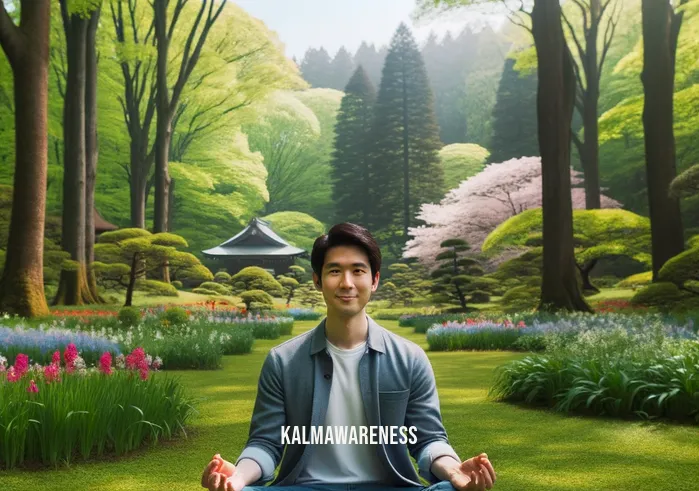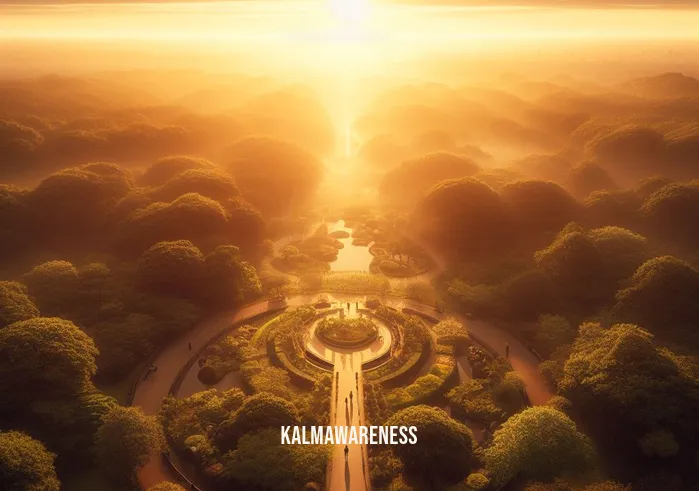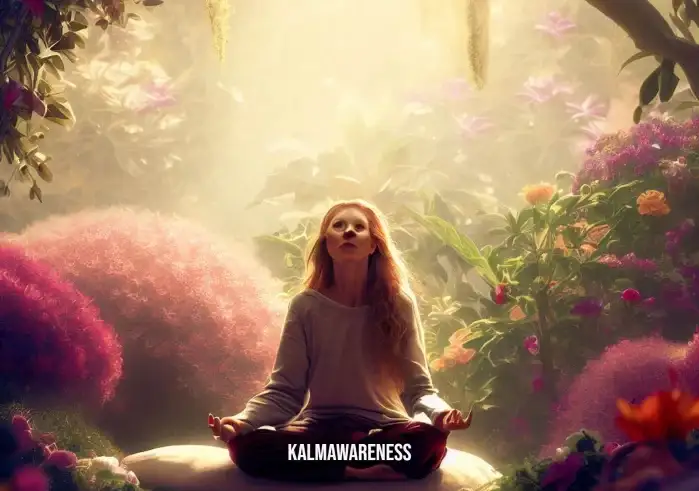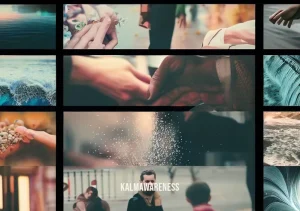Mindfulness in Imagery: A Path to Clarity or Confusion?
The Essence of ‘Mindful or Mind Full’ Images
Have you ever looked at an image and felt an immediate sense of calm wash over you? Or perhaps, quite the opposite, a single photograph managed to evoke a whirlwind of thoughts and emotions, leaving you feeling overwhelmed? This is where the concept of ‘mindful or mind full image’ comes into play. It’s not just about the content of the image but how it resonates with our mental and emotional state.
Mindfulness Through Visuals
In today’s fast-paced digital world, we’re constantly bombarded with visuals – from scrolling endlessly on social media to the advertisements that pop up in every corner of the web. Amidst this chaos, a ‘mindful image’ serves as a breath of fresh air. It’s that picture which encourages you to pause, reflect, and connect with the present moment. It could be a serene landscape, a captivating piece of art, or even a simple, everyday scene depicted in a way that it draws you into a state of mindfulness.
On the flip side, a ‘mind full image’ is the exact opposite. It’s that cluttered, chaotic picture overloaded with elements, colors, and information. It mirrors the state of a mind full of thoughts, unable to find a focal point or a moment of peace.
The Impact on Our Daily Lives
The distinction between these two types of images is crucial in understanding their impact on our mental well-being. In a world where we’re already grappling with information overload, mindful imagery can be a tool for mental relaxation and stress reduction. It’s akin to taking a short mental vacation, allowing your mind to wander in a peaceful landscape or get lost in the intricate details of a thought-provoking artwork.
Conversely, images that are ‘mind full’ can add to our mental clutter. They might reflect the chaos of our thoughts, making it harder to find that much-needed mental clarity. But there’s a flip side to this as well. Sometimes, a ‘mind full’ image can also serve as a mirror, helping us recognize the need to declutter our minds.
Embracing Mindfulness in Imagery
So, how do we incorporate more mindful images into our lives and reduce the impact of ‘mind full’ ones? It starts with intentionality in what we consume visually. Choosing to surround ourselves with images that promote calmness and mindfulness can have a subtle yet significant effect on our daily mental state. Websites like Kalm Awareness offer insights into how we can cultivate mindfulness through various practices, including visual ones.
Additionally, engaging in activities like mindful photography can be a powerful way to train our minds to focus and find beauty in the mundane. It’s about slowing down, observing your surroundings, and capturing images that resonate with a sense of peace and simplicity.
Wrapping Up with a Thought-Provoking Question
In conclusion, the concept of ‘mindful or mind full image’ is more than just a play on words. It represents two vastly different experiences of engaging with visuals in our everyday life. As you reflect on this, consider the images you encounter daily. Do they bring you peace or add to your mental clutter?
To spark your curiosity for the next section, here’s a question to ponder: Can the simple act of choosing what images we surround ourselves with really influence our overall sense of well-being and mindfulness?

Harnessing the Power of Mindful Imagery in Everyday Life
Delving Deeper into Mindful Imagery
Building on our understanding of ‘mindful or mind full image’, let’s delve deeper into how mindful imagery can be a transformative tool in our everyday lives. Mindful imagery goes beyond just being aesthetically pleasing. It has the power to alter our emotional state, impact our thought patterns, and even influence our overall well-being.
The Psychological Impact of Mindful Images
Mindful images act as visual anchors, grounding us in the present moment and providing a respite from the incessant stream of thoughts and worries. They are more than just pictures; they are portals to tranquility and mindfulness. For instance, an image of a serene landscape can transport us to a state of calmness, while a chaotic, cluttered image can heighten our sense of disorder and stress.
“A picture is worth a thousand words, but a mindful image is worth a thousand moments of peace.”
Mindful Versus Mind Full: A Comparative View
To better understand the impact of these two types of images, consider the following table:
| Aspect | Mindful Image | Mind Full Image |
|---|---|---|
| Visual Content | Simplistic, calming, nature-focused | Cluttered, chaotic, overwhelming |
| Emotional Response | Induces tranquility, focus, and clarity | Triggers stress, distraction, confusion |
| Mental Impact | Reduces anxiety, promotes mindfulness | Increases mental clutter, hampers focus |
| Usage in Daily Life | Encouraged for stress reduction and focus | Best limited or used for self-awareness |
This table underscores the stark differences between these two types of imagery and their respective impacts on our mental state.
Integrating Mindful Imagery into Daily Routines
Practical Steps for Mindful Visual Consumption
- Curate Your Visual Environment: Actively choose to surround yourself with images that evoke a sense of peace and mindfulness. Whether it’s your phone wallpaper, your work environment, or the art in your living space, ensure these visuals align with the concept of mindfulness.
- Mindful Photography: Engage in mindful photography, where you focus on capturing images that embody simplicity and tranquility. This practice not only beautifies your environment but also trains your mind to notice and appreciate the serene moments in life.
- Educate and Explore: Learn about the principles of mindful imagery through resources such as mindfulness classes or books on the subject. Education is key to understanding and fully embracing this concept.
Questioning the Boundaries of Mindful Imagery
As we explore the profound effects of mindful imagery, it’s essential to question and challenge our understanding of this concept. Are there limits to the positive impact of mindful images? Can an image that starts as ‘mind full’ transform into a ‘mindful’ one based on our perception and mindset?
These questions open the door to a more profound exploration of the subject, challenging us to think beyond the surface and explore how our individual experiences and perceptions shape our interaction with imagery.
In the next section, we’ll wrap up our journey through the world of ‘mindful or mind full image’, aiming to provide you with a holistic understanding and practical insights to carry into your daily life. Stay tuned to discover how you can fully integrate the power of mindful imagery into your everyday experiences.

Embracing Mindfulness Through Imagery: A Comprehensive Guide
Reflecting on the Journey of Mindful Imagery
As we conclude our exploration of ‘mindful or mind full image’, it’s vital to reflect on the journey we’ve undertaken. We’ve delved into the essence of mindful images, their impact on our mental health, and practical ways to integrate them into our daily lives. Now, let’s synthesize these insights into actionable steps and look forward to how we can continue to apply these principles in the future.
The Transformative Power of Mindful Images
The journey through mindful imagery teaches us the importance of being selective with the visual content we consume and create. By embracing images that evoke tranquility and mindfulness, we can significantly enhance our mental well-being and clarity.
Future Scenarios and Applications
Looking ahead, the concept of ‘mindful or mind full image’ has vast potential for application in various fields:
- In Education: Incorporating mindful imagery in educational settings can aid in stress reduction and improve concentration among students. For example, displaying serene nature scenes in classrooms could enhance the learning environment.
- In Workplace Wellness: Offices can use mindful imagery to create a more peaceful and productive workspace. This could include artwork or digital displays that promote calm and focus.
- In Mental Health Therapy: Therapists might use mindful images as tools for relaxation and mindfulness training, helping clients to manage anxiety and stress.
Actionable Insights for Embracing Mindful Imagery
- Curate Your Visual Space: Actively choose calming and simple images for your personal and professional environments.
- Practice Mindful Photography: Engage in photography that focuses on capturing the beauty in simplicity and tranquility.
- Educate Yourself: Learn more about mindfulness and its applications through resources like mindfulness books for teens or mindful martial arts.
- Apply in Daily Routines: Use mindful images as backgrounds on digital devices or in physical spaces to promote a calming atmosphere.
Engaging Call-to-Action for Continued Exploration
To deepen your understanding and practice of mindfulness through imagery, I encourage you to explore additional resources. Whether it’s through books, online courses, or practical workshops, continuing your journey in mindfulness can profoundly impact your mental and emotional well-being. Consider checking out meditation stories for students for engaging narratives that blend mindfulness and storytelling.
Concluding Thoughts
In conclusion, the journey through ‘mindful or mind full image’ has revealed the profound impact that visuals can have on our mental state. Here’s a concise summary of our key insights:
- Mindful images: Promote tranquility, focus, and mental clarity.
- Mind full images: Reflect and often amplify mental clutter and stress.
- Practical Application: Mindful imagery can be integrated into daily life for improved mental well-being.
- Future Potential: Vast applications in education, workplace wellness, and mental health therapy.
By embracing the power of mindful imagery, we open the door to a more peaceful, focused, and mindful existence. Let’s carry these insights forward and continue to explore the profound impact imagery can have on our lives.




